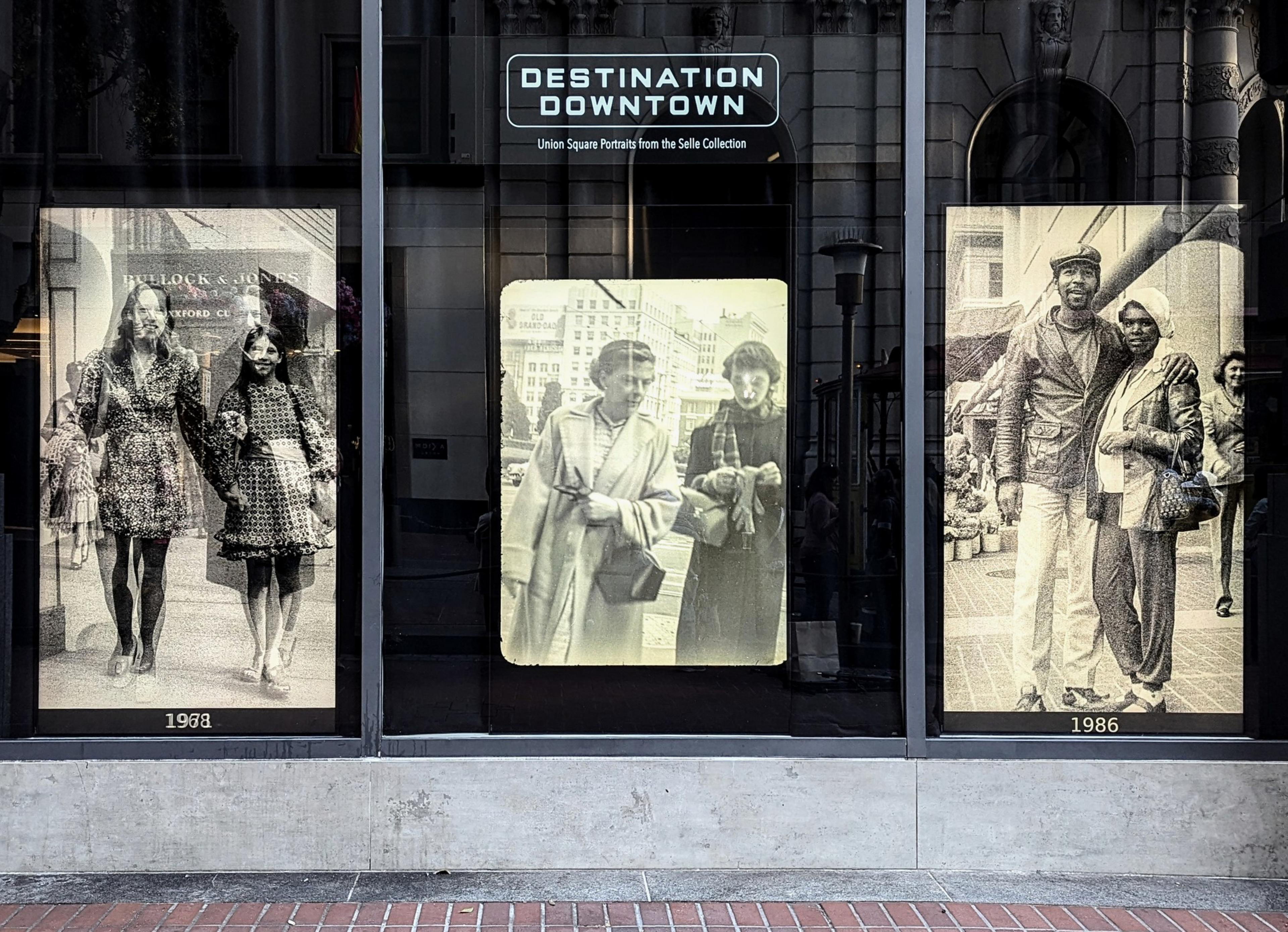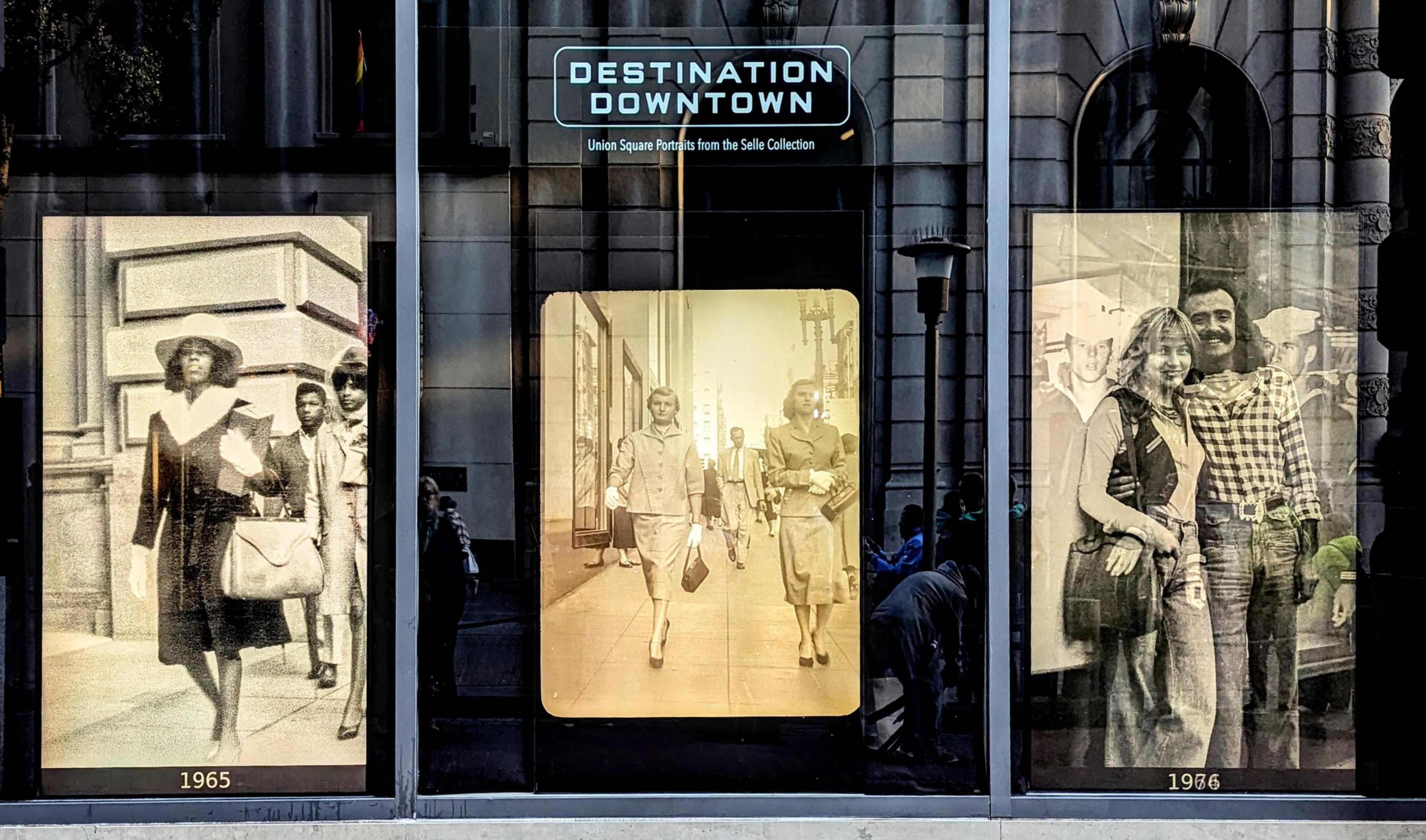The cable car turnaround at the foot of Powell Street anchors a distressed commercial corridor (opens in new tab)in downtown San Francisco. But even as vacancies abound, there’s a new public art exhibit to catch the eye.
Around 8,000 never-before-seen black-and-white photographs of people captured on city sidewalks from the 1950s to the 1980s are displayed in “Destination Downtown,” visible on three screens (opens in new tab) in a ground-floor window of the Flood Building from 9 a.m. to 9 p.m. daily. Professionally shot, well-framed and mostly undated, the anonymous portraits include young couples in love, scruffy hippies and smartly dressed matrons with beehives and cat’s eye sunglasses.
According to Michael Lerner, vice president of local nonprofit Community Arts International (opens in new tab) and the project’s creative director, “Destination Downtown” was drawn from 1.3 million negatives rescued from a near-forgotten archive in upstate New York.

The result isn’t just a fun look into a bygone era. It’s also a site-specific installation. Many of the souvenir-style photos were taken around Powell and Market streets, precisely where they are being displayed — and much of the architecture in the area remains almost exactly as it was 60 or 70 years ago, right down to the lampposts. “The images take on a ghostlike quality that seems to hover in the space in which they were taken,” Lerner said. “It’s almost like you’re time-traveling.”
A company called Fox Movie Flash, which had an office where Ikea now stands, employed red-hatted photographers to sell these mementos. People paid a small amount — in the early days, as little as 50 cents — to have their picture taken on a modified camera that used high-quality, 35 mm film. A device attached to the setup recorded a code on each negative and printed a ticket that the subject used to claim their photo by mail. Although Fox Movie Flash was a legitimate business, Lerner believes many of the photos languished unsold.
“We don’t know who took them,” he said of the photography process, which went on for three decades. “In most cases, we don’t know when they were taken. And we don’t know who these people are. But they’re remarkable, from an archaeological standpoint.”

When Fox Movie Flash folded, its negatives got shipped across the country, where they remained unseen for decades. Lerner learned of the collection’s existence three years ago, after a small gallery in Riverside, Calif., exhibited a handful. To digitize it all and mount a curated show, Community Arts International partnered with Karin Flood, former president of the Union Square Alliance. Her family owns the Flood Building, which has lacked an anchor tenant since The Gap moved out in 2020 — and had some windows to spare.
Although most of the photos are undated, contextual clues like theater marquees and newspaper headlines help peg them to a year. Today, viewers of the show (which is free and on display through Oct. 12) can see the fruits of these enterprising street photographers, whose work was purely commercial and never intended as fine art.
Still, there’s a sense of visual unity — if not homogeneity. “The way they present the past makes these million images hang together,” Lerner said, “even though they were taken many years apart.”
